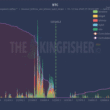Bitcoin remains strapped in a narrow trading channel near $104.7K amid escalating global uncertainty and rising risk aversion. Despite choppy price action and dampened sentiment, institutions are quietly ramping up exposure—potentially priming the market for its next significant move.
Mounting Geopolitical Tensions and Fading Risk Appetite
This week, Bitcoin struggled to regain upward momentum, slipping nearly 3% over the past seven days to hover just above $104,700. Global financial markets including the Euro Area Stock Market Index echoed this cautious sentiment, retreating to around 5,237 points. Fresh anxiety was stoked by headlines of looming U.S. military action in the Middle East, heightening investor unease and sparking a broad retreat from riskier assets.
Federal Reserve Signals and Tightening Volatility Range
The U.S. Federal Reserve held its benchmark rate steady but warned of inflation pressures linked to tariff proposals—reinforcing the risk-off mood. As capital rotated away from volatile assets, Bitcoin’s price compressed into a sharply constricted 30-day band, suggesting an impending volatility breakout. Market indecision is now palpable, as realized pricing models and on-chain analytics pinpoint strong support between $97,000 and $94,000. Yet, continued weakness threatens to break these levels and trigger steeper liquidations across the digital asset landscape.
Key Stats & Figures
- Current Bitcoin Price: $104,700, representing a 3% decline over the week
- 30-Day Price Range: Tightening compression; rolling bands signal breakout potential
- Spot Bitcoin ETF Net Inflows: $216.48 million recorded in a single day—7th consecutive positive inflow session
- Key On-Chain Support: $97,000–$94,000, as identified by realized price and moving average models
- Crypto Fear & Greed Index: 48—denoting neutral yet cautious market sentiment
- Altcoin Season Index: At 23, indicating investor focus remains on large caps and Bitcoin dominance
- Social Sentiment Ratio: Positive-to-negative comment ratio has dropped to 1.03, a low not seen since early April
Institutional Accumulation Amid Retail Disengagement
While technical signals highlight a subdued market, institutional investors are bucking the trend—evidenced by seven straight sessions of strong net inflows into Spot Bitcoin ETFs. This accumulation phase stands in contrast to waning retail enthusiasm: the number of positive comments about Bitcoin on social media has plummeted to its lowest level in two months, and risk appetite remains muted across altcoins. As participation thins, Bitcoin’s price becomes ever more susceptible to shocks from macro developments or sudden swings in sentiment.
Conclusion: What This Means for the Market
Bitcoin’s current stasis reflects a delicate equilibrium between mounting global risks and resilient institutional conviction. While further downside cannot be ruled out—especially if price support below $97,000 is lost—sustained inflows signal that long-term investors see opportunity in the uncertainty. The coming weeks may be decisive, with volatility likely to return as the market responds to geopolitical shifts and macroeconomic signals.
DISCLAIMER: The information provided in this article is for general market commentary only and does not constitute investment advice. Please conduct your own research before making any investment decisions.
